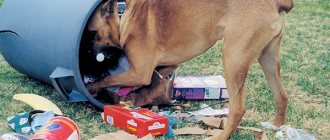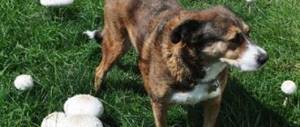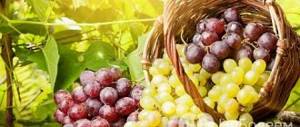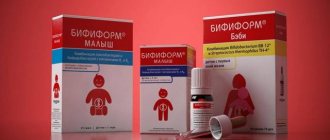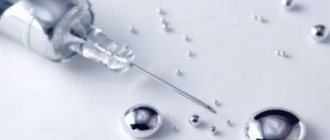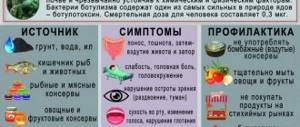When asking veterinarians in the style of: what to feed a dog after poisoning, most dog owners mean food intoxication.
This happens due to the fact that four-legged friends are not particularly picky about food. Even cats choose their food more pickily. While walking, dogs often pick up various scraps from the ground, which can cause serious poisoning. The frightened owner immediately takes the victim to the hospital, where he is prescribed a course of treatment. But alarmed dog lovers are not always immediately interested in what to feed their dog after poisoning. But diet for a poisoned person is no less important than therapy immediately after intoxication.
Poisoning in dogs
Poisoning is a disruption of the vital functions of a dog’s body due to the ingestion of toxic substances.
The severity of the course and the duration of the rehabilitation period depend entirely on:
- amount of toxin;
- type of toxic substance;
- ways in which poison enters a dog’s body;
- duration of impact on organs and systems;
- timely provision of veterinary care.
The list of toxic substances is huge. That is why no laboratory will undertake to identify a substance without at least suspecting a group. PHOS, HOS, mercury-containing substances, heavy metals, urea, pyrethroids - all these poisons can enter the dog’s body and lead to irreversible consequences.
How to feed the dog if poisoned will depend on exactly how the poison got in. It is one thing if the route is respiratory (by inhaling gases) or percutaneous (through the skin and mucous membranes), and a completely different matter when the poison enters through the gastrointestinal tract. When in food or water, a toxic substance directly affects the mucous membranes of the mouth, stomach and intestines.
When considering what you can feed your dog after poisoning, you need to take into account how long the effect of the toxic substance on the body lasted. It could be:
- Ultra-acute effect. We will not consider it, since the animal dies.
- Acute - with a single dose of poison. In this case, the signs are clearly expressed and help can be provided quickly.
- Chronic. In this case, toxins constantly or periodically enter the animal’s body, causing a toxic effect.
The general condition of the dog is also important. Feeding will also depend on it. You need to pay more attention to the question if the animal:
- suffered stress (change of owner, place of residence, feeding ration);
- has reduced immunity;
- suffered from infectious or invasive diseases;
- is in the period of pregnancy or lactation.
All these nuances must be discussed with the doctor who prescribed the treatment.
Is it possible before vaccination (against rabies)
There are no specific contraindications for feeding before vaccination, including rabies vaccination. But, for example, if your pet gets sick in the car, it is better to refrain from feeding before and feed the animal after the procedure.
However, if the vaccination is scheduled after lunch, then in the morning you can give the animal light food in small quantities. However, access to water should not be limited. If the vaccination is done during the hot season, it is necessary to give the dog something to drink in advance.
Dog's diet after poisoning
There is an opinion that in case of poisoning it is impossible to transfer a dog from one type of feeding to another. However, experience shows that when feeding an animal dry food after poisoning, it is better to switch the dog to a natural diet.
When introducing natural products into the diet, we:
- we return the carnivore to its natural feeding behavior;
- we restore the balance of the natural intestinal microflora;
- we can easily control the quality and quantity of products included in the diet.
There is a whole range of dietary dry food and canned food. Unfortunately, even the most expensive and popular brands are of very low quality. Laboratory studies show that the feed does not contain the ingredients declared by the manufacturer . The basis of such feeds is not meat, which is natural for carnivores, but grain nutrients.
When figuring out what to give a dog after poisoning, you should take into account that such an animal needs food of animal origin:
- meat, bones and offal;
- milk and dairy products;
- eggs;
- fish and fish products.
If porridge was introduced into the diet before poisoning, and the pathology is not associated with damage to the gastrointestinal tract, then there is no point in excluding this dish, but its quantity can be reduced.
As for the amount of feeding, it needs to be slightly reduced, although during this period the animal itself regulates the amount of food. But it is better to increase the frequency to 4-5 times a day.
Attention! You cannot force feed your dog. Hunger is the best healer.
A diet for toxic pathology involves drinking plenty of fluids. Clean water in a clean bowl should be freely available to the pet at all times.
For drinking, especially if the animal has bloody diarrhea, it is recommended to give the dog whey in unlimited quantities. Fresh yogurt also plays an important role in the diet. Blood in the feces indicates a violation of the intestinal mucosa. The villous epithelium is “torn off.” Microflora has no place to live. At this point, lactic acid bacteria will help the intestines. The same recommendation is also relevant for chocolate poisoning.
Chicken broth for a dog after poisoning is very desirable. However, you cannot choose broiler chicken for this. The intensive metabolism of broilers does not improve the quality of meat. It is better to avoid such a product. To feed a sick dog, you need a domestic, old chicken. The aromatic broth is an “antibiotic” for the body. The animal will happily accept the product.
old
Due to the fact that metabolism slows down with age, feeding an old animal should consist of low-fat foods. You should also give more liquid food, as constipation may occur.
If the diet consists only of food, then you need to choose one that is low in calories. When feeding naturally, give preference to lean chicken and beef. Add fresh grated vegetables to your diet.
It is strictly forbidden to give bones and other solid food to an old dog.
Allowed foods for dogs after poisoning
When considering how to feed a dog after poisoning, you should understand that the food should be the freshest and highest quality. Your pet's diet should include:
- minced meat (trimmings, offal);
- bones, if poisoning is not associated with damage to the gastrointestinal tract;
- dairy products (milk, curdled milk, fermented milk cheese, kefir, whey);
- fish (boiled only) and fish broth;
- raw chicken eggs. This ingredient is required for any pathology associated with the gastrointestinal tract.
What to feed a dog when vomiting if its body rejects food? Cook iodine jelly. For this:
- dilute a glass of milk with a glass of water and put on fire. Bring to a boil;
- While the milk is boiling, stir 1 tbsp in 100 ml of water. a spoonful of starch;
- add starch to boiling milk, stir;
- stop heating and cool;
- add 5-6 drops of alcohol tincture of iodine, stir.
This slimy decoction will help with food poisoning and diarrhea. You can also use a decoction of flax seeds as a nutritious mucus. If your doctor has previously prescribed gastric lavage, then read here how to rinse your dog’s stomach.
Sterilized
Nutrition after sterilization must be adjusted. You need to choose a balanced diet. You should not overfeed your dog, even if it wants to.
It is necessary to reduce the caloric content of food. If your pet is accustomed to natural food, for example, porridge with meat, you should reduce the amount of porridge, replacing it with protein or vegetables that are rich in fiber.
The best option would be to transfer the animal to specialized food for sterilized dogs. This will allow you to give your pet all the necessary vitamins and microelements, preventing obesity. You should not save money and buy low-quality animal feed.
Prohibited foods for dogs after poisoning
Among the foods prohibited for four-legged animals in case of poisoning:
- fried foods;
- smoked meats;
- sauces;
- raw fish;
- bones if there is damage to the gastrointestinal tract.
Owners are very concerned about the question of what to feed the puppy after poisoning. There are no particular differences. Good quality food from the approved list is suitable for both an adult dog and a puppy . If the pet is under 2 months of age, then the puppy’s food after poisoning should contain:
- dairy products;
- minced meat and fish;
- eggs.
Service
Feeding service dogs must be approached responsibly. Due to a lack of minerals and vitamins, metabolism is disrupted, skin and coat diseases begin, and the likelihood of infectious diseases increases.
Feeding standards for service dogs:
- Two-thirds of the daily diet is beef meat, as well as offal: heart, liver, tripe and other internal organs.
- One part of the diet is plant foods, such as boiled oats, rice or semolina.
- A raw egg and biscuits for dogs would also be a great addition. However, such supplements can be given occasionally.
- It is best to give the meat in large pieces so that your pet can tear it into pieces. This trains the jaw.
- A service dog's food should not be very soft or liquid. Therefore, everything is prepared with a small amount of water.
- After eating, the animal needs to rest for several hours. The bowl needs to be cleaned and put away half an hour after feeding. Leftover food should be thrown away.
If you decide to feed your service dog food, you must follow the established standards, adjusted by weight and age up to 6 months:
- up to 10 kg of weight – 300 g per day;
- 10-25 kg – 400 g;
- 25-45 kg – 600 g;
- More than 45 kg – 1000 g.
It is important to ensure constant access to fresh water.
It is prohibited to feed a service dog the following foods:
- potatoes and cabbage;
- sweets, including cookies and chocolate;
- lard
You can’t give leftover food from the table or give her cow’s milk.
Dry food or canned food after dog poisoning
Unfortunately, dry food and canned food, even with the indication “Medicinal”, are not such. Additives of medicinal herbs and other components are so small that they cannot be detected. The greatest advantage of dry food and canned food is convenience for the owner.
It should be noted that if the poisoning of an animal is not associated with food intake, then during the period of exacerbation the animal should not be transferred from natural products to dry food and vice versa.
The good quality of dry food cannot be assessed with the naked eye. Even the laboratory cannot determine what exactly is in the food. Unfortunately, food does not always pass examination even for such an indicator as toxicity.
Dry food rarely causes acute poisoning, but very often it leads to:
- to impaired immunity;
- a shift in the acid-base balance in the animal’s body;
- gradual accumulation of toxic substances.
A few days later
How to feed a dog if it is poisoned? And is it possible to do this? Acute poisoning affects the mucous membrane of the stomach and intestines. All organs of the digestive system suffer. The dogs are not fed for the first 24 hours after poisoning. They only give water. The body needs to get rid of poisons and toxins. This job lies with the kidneys. To help them, the dog is only given water. And the liver should not be distracted by food. She needs to recover from the fight against decay products.
Gradually, low-fat broths and liquid porridges are introduced into the diet.
What to feed your dog after poisoning and vomiting, so as not to fear that it will happen again? The pet survived one day of fasting and three days on broths and cereals. Now the following products are introduced into her diet:
- Boiled eggs.
- Skim cheese.
- Boiled vegetables: carrots and beets.
- Boiled sea fish.
- Boiled lean meat.
All listed products are introduced with great care. Mix them little by little into the main feed. They are still served liquid porridges and broths.
Chicken or quail eggs are hard-boiled. In general, dogs are allowed two chicken or four quail eggs per week. Therefore, half a chicken egg or one quail is grated and mixed into the broth.
Cottage cheese is mixed into the porridge. You should start with half a tablespoon of this product if we are talking about large breeds of dogs. If a Yorkshire Terrier or Chihuahua is poisoned, half a teaspoon of cottage cheese is enough for them.
Vegetables are grated, boiled well and mixed with porridge. You need to start feeding your dog with half a carrot and a beet.
The fish is cooked until the meat begins to separate from the bones. Then the bones are selected, the fish is cooled and fed to the pet with broth or porridge.
Give only beef, chicken or turkey meat. The ideal option would be a rabbit. It is gentle and easily digestible by the dog's stomach.
What should you start feeding your dog after poisoning? Pureed meat mixed with porridge. And the main thing is to give food in small portions. For the first time, 100 grams of protein product will be enough.
Another option for feeding a dog after poisoning is baby meat food. One jar (100 grams) is enough to mix into porridge.
Prevention
We found out what to feed a dog if it is poisoned. How to feed an animal in such a way as to prevent the occurrence of poisoning? It is enough to follow a number of rules:
- Feed must be of good quality.
- Questionable products should not be included in the animal’s diet.
- It is necessary to maintain a balanced diet and variety in feeding.
- Careful observation of your pet will help determine the insufficiency of certain nutrients in the diet and adjust the balance.
- If feeding is carried out with dry food or canned food, you must strictly observe the storage temperature and expiration dates of these products.
- You should not leave your pet unattended in unfamiliar places or while walking.
Knowing the rules of feeding a dog will help quickly restore the vitality of your four-legged pet.
Yard (street)
The feeding of a dog living in the yard is not much, but it differs from the diet of one that lives in an apartment. This is primarily due to the fact that the temperature outside is lower than indoors and the animal has to spend more energy to maintain the normal temperature regime of the body.
A yard dog's diet should include more carbohydrates and fats, especially in winter. You can give porridge with offal, food for active dogs. Be sure to ensure the availability of clean drinking water.
The best solution would be to switch to specialized feeds that are rich in vitamins and microelements, as well as the required amount of nutritional supplements.
Features of the mode
Feed your pet small portions 4–6 times a day
Now you know the list of allowed foods for a dog after poisoning. There are also some nuances associated with the process and frequency of feeding.
- Feed your pet small portions 4-6 times a day. And it doesn’t matter whether your dog is an adult or a puppy under one year old.
- The break between meals should be at least 2 hours; do not allow the animal to eat too often.
- After each meal, put your plate of food in the refrigerator. Before the next feeding, warm the food slightly in the microwave.
- Make sure your dog always has plenty of fresh water.
- Products should be lightly salted, but do not overdo it.
- The ratio of cereals with vegetables and meat for an adult dog is 1:2, for young puppies up to one year old – 1:3.
You should always consult a doctor, especially if the animal has suffered from rat poison poisoning. This diet is ideal for dogs after serious intoxication. Over time, it will be possible to return to the usual feeding 2 times a day and introduce probiotics into the diet to restore the intestinal microflora.
Reviews
Daria, Syzran
“My tailed ones are 9 and 15 months old, I feed them natural food, although the breeder of the younger puppy recommended some Canadian food. I'm not a fan of drying. In addition, that food was not sold anywhere; it had to be ordered online. And you never quite know what was mixed in there. I give my Yorkies veal, turkey, and a little fish. They eat both cheeks! I cook rice porridge, add meat, carrots, pumpkin, and a drop of flaxseed oil. The dogs are eating well, healthy and happy.”
Maxim, Penza
“We have an adult Yorkie, a five-year-old male. For the first two years we fed natural food and regularly came to the veterinarian every 2-4 months with the question: “What’s wrong with our dog again?” Either some spots on the skin, then diarrhea, then subcutaneous acne... And every time the doctor said that it was a matter of feeding, allergies, lack of vitamins, etc.
Let's summarize
The main purpose of the article is to tell the reader about what to feed a dog if it is poisoned. Let's recap the main points to remember:
- The first day after poisoning is fasting. Give the dog only water.
- The duration of the dog diet is from 3 to 7 days. They must be sustained to help the gastrointestinal tract recover.
- The full period of the recovery process and appropriate nutrition takes one to three weeks.
- In the first few days, the dog is given low-fat broths and liquid cereals.
- Gradually, foods from the permitted list are added to the diet.
- Dry food and canned food are prohibited during the rehabilitation period.
- Small meals: 4-6 times a day.
- The food should be warm.
- Stale kefir is suitable as a natural probiotic (for 2-3 days).
A pet after acute intoxication needs special care and nutrition. His full recovery will depend on these factors. What to feed a dog after poisoning and is it necessary to change the feeding regimen? This is exactly what we will talk about in this article. Please note that consultation with a doctor regarding nutrition is required. Especially if poisoning has occurred with rat poison, isoniazid or other chemicals.
After poisoning, your pet needs special care
What can be replaced
Pure milk is replaced with dairy products, which also contain calcium and other necessary elements, and are also easier to digest.
The alternatives are:
- kefir;
- cottage cheese;
- cheese;
- yogurt;
- sour cream;
- serum.
Kefir is recommended by experts for regular consumption, it is well absorbed, useful for the digestive process, it is recommended to be given to puppies and adults (especially overweight ones), however, not every dog will like the taste of a fermented milk drink. To prevent the intestines from being weakened by fat content, it is better to choose a low-fat product.
Cottage cheese is easily digestible, can replace one full feeding for a puppy, it is included in the daily nutrition of babies, and is given to adult dogs twice a week. If there is a lack of calcium, you can pamper your pet with cottage cheese every day without disturbing the balance of the entire diet. An excess of this element leads to pathologies of the musculoskeletal system, skin, kidneys, and stomach. It is important to alternate calcium-containing products so as not to cause excess substance in the blood.
Cheese is often used as a reward for a pet during training. Choose a cheese variety without dyes, aromatic seasonings, mold; smoked, salted, processed types are not allowed in food. The norm is 70 grams per day for large breeds, 30 grams. – for small individuals. You should be careful with the cheese delicacy; your dog’s food preferences may change, and he will become picky about food.
Yogurt has a universal property, copes with diarrhea and constipation, has beneficial bacteria that promote normal digestion, its consumption reduces gas formation, helps eliminate toxins and waste. For preventive purposes, the dog is offered a couple of small spoons with other food; consumption is useful during illness and during the rehabilitation period, helping to protect and restore weakened health. Due to the presence of sugar, yogurt treats should not be overused.
Sour cream has a high fat content, if the dog tolerates it normally, then it is mixed with cottage cheese. For puppies, sour cream is included in the menu, not as an independent food, but as an additive - a few spoons per week is enough. The main thing is to observe moderation; fatty foods lead to increased cholesterol and abnormal functioning of the pancreas.
Whey is a lactoproduct consisting of water with a small proportion of fat; it is recommended to cook porridge with it; in its pure form it acts as a laxative and is given to dogs suffering from constipation.
An animal may develop an individual intolerance to any food; it is important to monitor the first test for response.
What's prohibited?
What to feed a dog after poisoning, besides liquid cereals, broths and eggs with cottage cheese? Can I give her her favorite beef bone with meat? In no case! The gastric mucosa is still very vulnerable and needs to be restored. List of products that are prohibited:
- Raw and cooked beef bones.
- Pork meat.
- Pasta, potatoes.
- Legumes.
- Bread.
- Milk.
- Raw vegetables.
- Fruits.
- Offal.
For some reason, there is an opinion that milk is beneficial for a dog after poisoning. This is wrong. It is not at all useful for adult pets. Milk can be given to puppies up to 4 months. For adults, this is heavy and unhealthy food.

